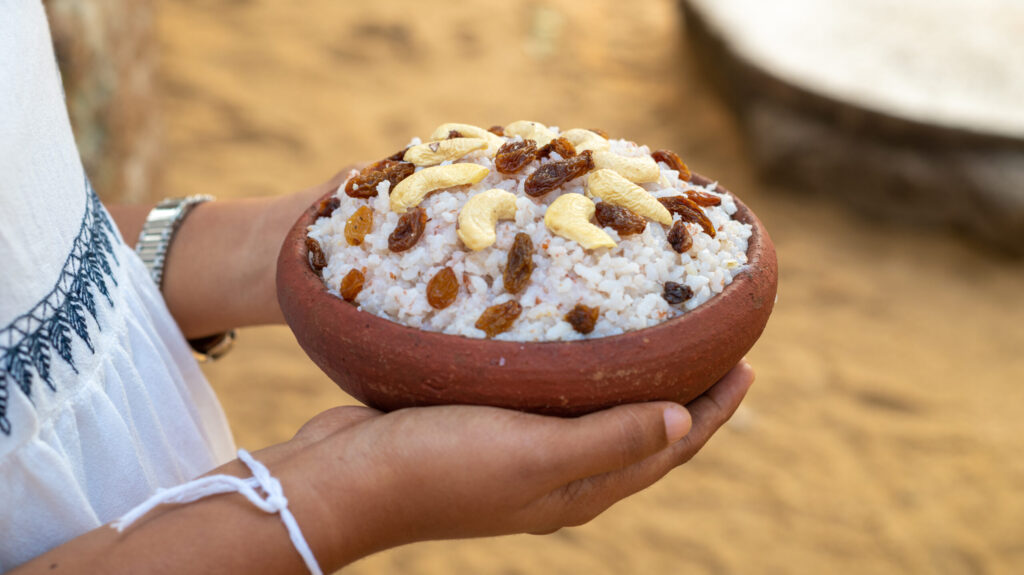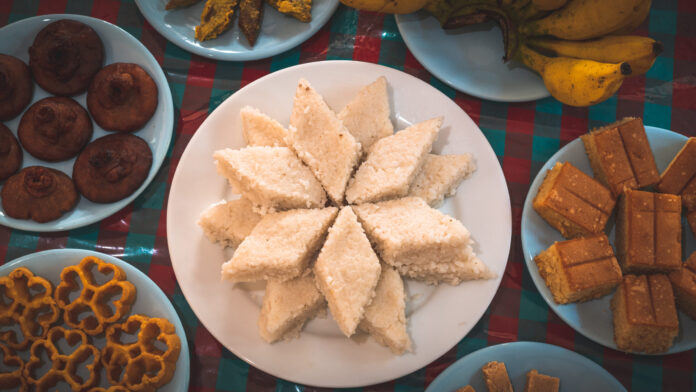By The Frontpage Journal
Sri Lanka’s rich tapestry of seasonal festivals is woven deeply into the island’s culture, bringing communities together to celebrate not only faith and tradition but also the bounty of the land through unique culinary delights. The changing seasons mark special occasions that blend vibrant rituals with distinctive foods, creating sensory experiences that reflect Sri Lanka’s diverse heritage and enduring connection to nature.
The Sinhala and Tamil New Year, or Aluth Avurudda, celebrated in April, is one of the most significant festivals in Sri Lanka. It marks the end of the harvest season and the start of a new year according to the traditional lunisolar calendar. The festival is a joyful occasion filled with customs, games, and prayers for prosperity. Central to the celebration are sweet treats and savory dishes prepared in every household. Kokis (crispy deep-fried sweets), kevum (oil cakes), mung kavum (mung bean cakes), and kiribath (milk rice) are staples that symbolize purity and good fortune. These foods are lovingly made using traditional recipes passed down through generations.
Another important festival is Vesak, which commemorates the birth, enlightenment, and passing of the Buddha. Although Vesak’s focus is spiritual, it is also a time for community gatherings and food sharing. Devotees prepare simple vegetarian meals and sweets to offer at temples and share with neighbors. The practice of dana, or giving, is emphasized, reflecting values of generosity and compassion.
The harvest festivals in various regions highlight the close relationship between food and seasonal cycles. For example, the Aluth Sahal Mangallaya in the rice-growing areas celebrates the first harvest with offerings of newly threshed rice, accompanied by folk music and dance. Traditional dishes prepared from fresh produce are shared among families and villagers, reinforcing bonds and gratitude for the land’s generosity.

Sri Lankan festivals also showcase regional culinary diversity. Coastal communities highlight seafood specialties during celebrations, while hill country festivities feature spiced vegetable curries and unique sweets made from local ingredients like jackfruit and treacle. The use of spices such as cinnamon, cardamom, and cloves not only flavors the dishes but also connects them to Sri Lanka’s historic role as the “Spice Island.”
Food during festivals is more than nourishment—it is a symbol of cultural identity and continuity. The preparation itself is often communal, with family members and neighbors coming together to cook, share stories, and pass down knowledge. Traditional cooking methods, such as clay pot cooking and wood fire roasting, add authenticity and flavor to the festive meals.
For visitors, participating in Sri Lanka’s seasonal festivals offers an immersive experience into the island’s cultural heartbeat. Tasting the foods alongside witnessing the rituals provides insight into how Sri Lankans honor life’s cycles with gratitude, joy, and togetherness.
For locals, these festivals are cherished opportunities to reconnect with heritage, renew social ties, and express hopes for the future. Through taste and tradition, Sri Lanka’s seasonal festivals continue to enrich community life and preserve cultural legacies.




